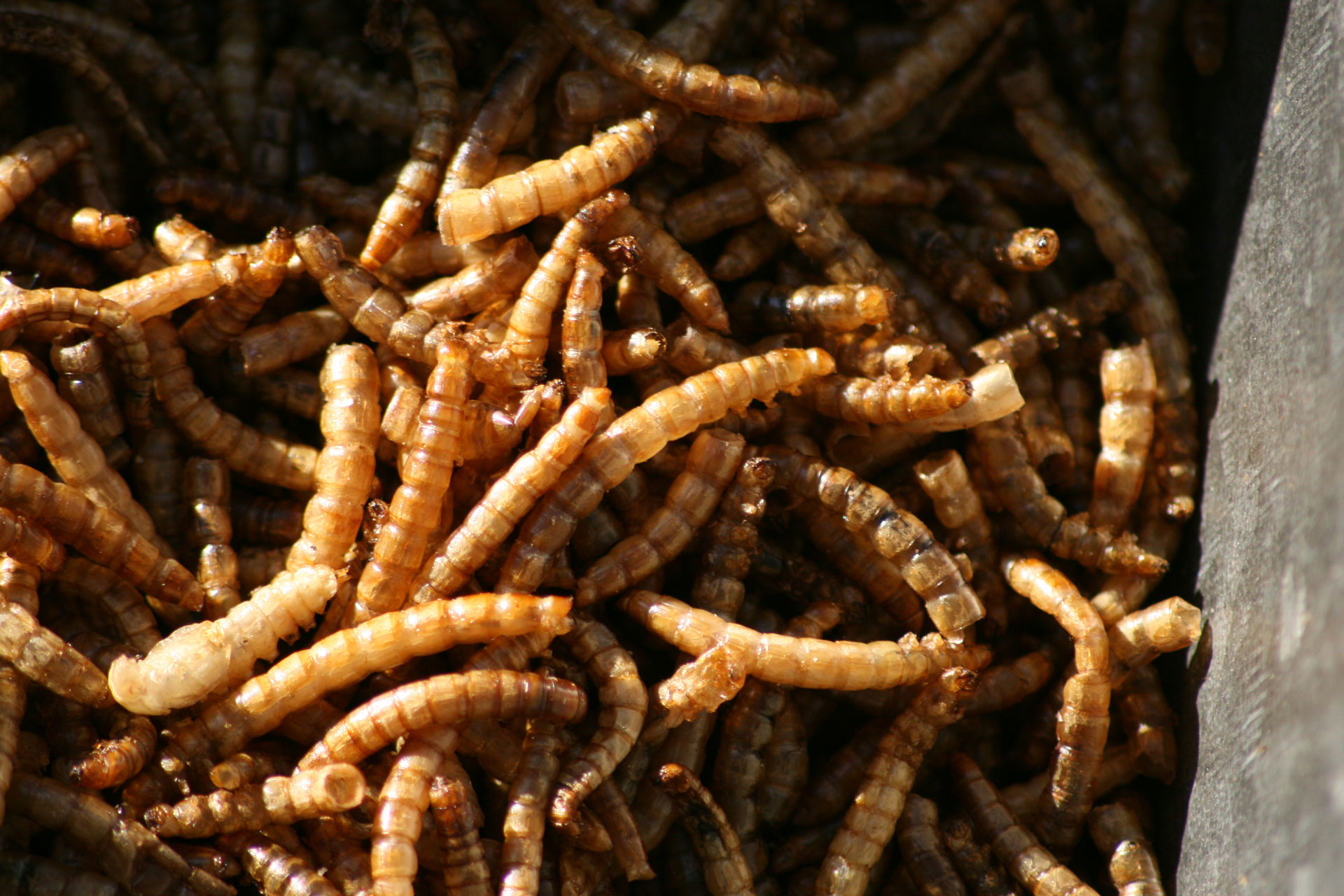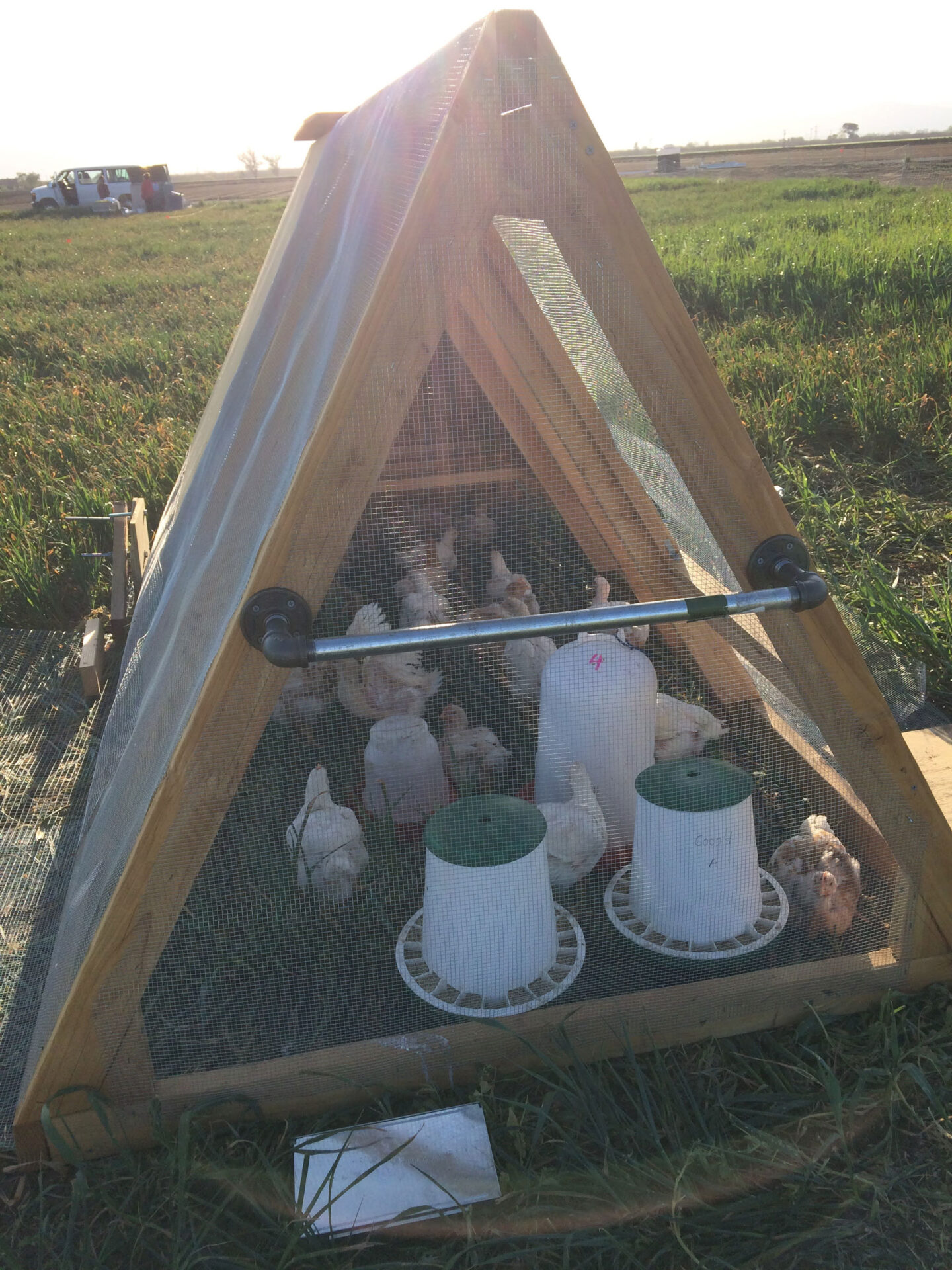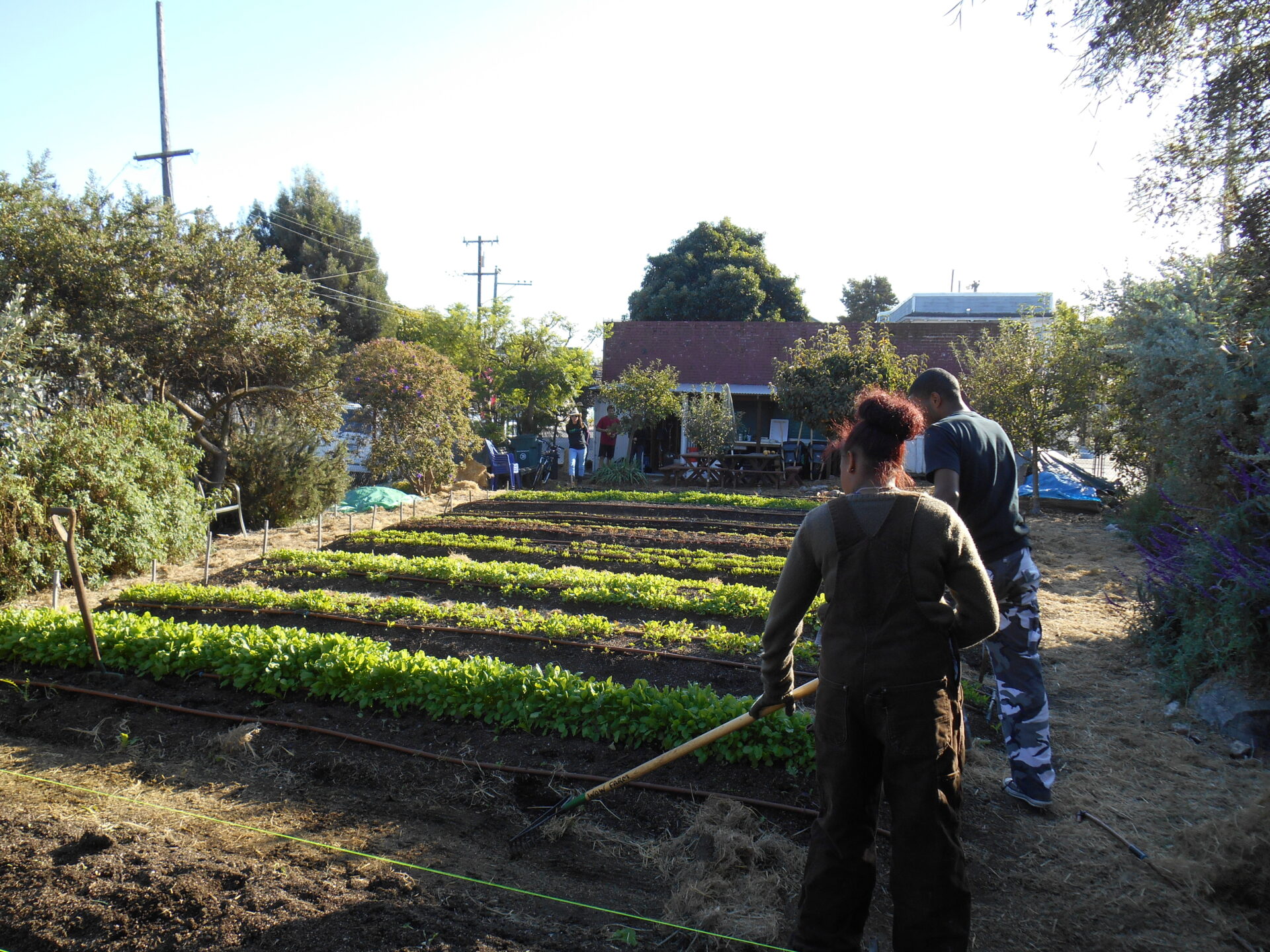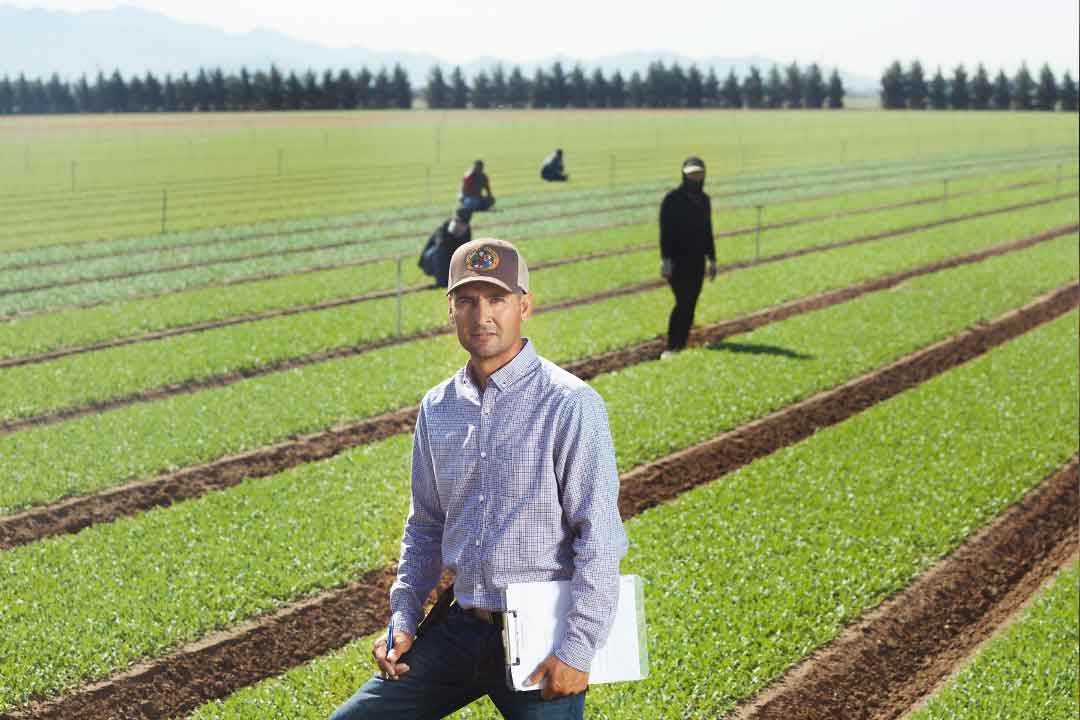
It’s not generally possible to increase the soil organic matter by more than one percent. But even that one percent can markedly improve soil fertility. “Feed the soil to feed the plant” is the organic farmer’s adage, and organic matter is the go-to organic fertilizer option to do just that. Organic matter is also a significant source of micronutrients such as iron, copper and zinc. As organic matter is mineralized, it either becomes bound to soil minerals, or it becomes available for plant growth.
With vegetable crops, color, product size and uniformity are often as important for market share as yield. To obtain these attributes, nitrogen management is key.
But managing soil nitrogen levels with organic matter is tricky, according to Nick Andrews, Oregon State University (OSU) Organic extension agent. “Nitrogen is often the most limiting nutrient. It’s a little bit more complex,” Nick said. The label of an organic fertilizer gives the NPK (nitrogen, potassium, phosphorus) numbers, but those amounts won’t necessarily be available to the plants.
Nitrogen (N)
Through the process of mineralization, some of the nitrogen from organic matter is changed into plant-available minerals—ammonium and nitrate, for instance. The problem is this process doesn’t always coincide with crop growth. Several factors are at play:
1) Temperature. Mineralization in soil temperatures below 50 degrees is insignificant. It does, however, increase as soil warms.
2) Moisture. Soil moisture is important. Mineralization happens rapidly in moist soils, but slows considerably in extremely wet or extremely dry soils.
3) Tillage. Tilling creates a surge of microbial activity, but that burst doesn’t last long—it subsides within weeks or even days.
Some short season crops have low nitrogen requirements. Using the available nitrogen in soil organic matter, residues from cover crops and/or applications of compost, crops such as radishes and leafy greens may still produce well.
Crops with longer seasons and higher nitrogen needs will often need supplemental sidedressings of organic nitrogen fertilizers. Heavy feeders such as peppers and tomatoes will benefit greatly from additional nitrogen. Nitrogen fuels green, leafy growth, which helps plants photosynthesis, producing the food required to set and develop fruits and vegetables.
Here are some animal-based organic fertilizers to supply nitrogen quickly. These are good for cool season plantings:
Blood Meal, 13-0-0—Blood meal, made from dried cattle blood, is a good nitrogen source for early spring or fall plantings.
Chicken Manure, 1.0-0.8-0.5—Chicken and other poultry manures are a good choice if your crop needs a quick hit of nitrogen. Poultry manures release nitrogen rapidly—up to 75 percent is released into the soil the first year. Most other manures release only about a third of their nitrogen the first year. Nick cautions against using only manures for nitrogen. “If you’re using enough manure to supply your nitrogen, you’ll have more phosphorus and potassium than you need.”
Fish Meal, 9-4-1—Fish meal is made from ground-up fish. It’s an excellent nitrogen source for cool-season vegetables, especially for early spring plantings. Blood meal and fish meal may attract animals, including raccoons.
The following are organic fertilizers that supply nitrogen slower. These are good for later-season crops:
Feather Meal, 12-0-0—Feather meal, made from ground-up chicken feathers, is a good source of nitrogen for late-season growth. Good choice for tomato and pepper crops.
Barnyard Manures—these are well-balanced fertilizers, supplying small amounts of nitrogen, phosphorus and potassium in an organic base. Well composted and cured manure should smell earthy. It shouldn’t smell strongly of ammonia.
Different crops have different nitrogen needs. Crops with low nitrogen needs include spinach, baby greens, arugula, collard greens, Swiss chard, kale and radishes, as well as parsnips, peas, beans and squash.
Crops with medium nitrogen needs include carrots, onions and garlic. Also with medium needs are lettuce, sweet corn, pumpkins, cucumbers, zucchini, rutabagas, potatoes, scallions and watermelon.
Crops with higher nitrogen needs include not only tomato and peppers, but cruciferous vegetables such as broccoli, Brussels sprouts, cauliflower and cabbage. High nitrogen is also needed by celery, kohlrabi, turnips, cantaloupe and honeydew, squash and eggplants, as well as cruciferous vegetables like broccoli, cauliflower and cabbage.
Phosphorus (P)
Organic matter not only provides nitrogen, it also provides phosphorus, a macronutrient. Warm season vegetables require less phosphorus (20-25 parts per million in soil levels) than cool season vegetables (50-60 parts per million). Phosphorus is especially important early in the season because it stimulates early shoot and root growth.
Optimal crop yield calls for adequate levels of soil phosphorus, the second primary nutrient. Phosphorus helps plants store and move carbohydrates, or plant energy. It also promotes development of roots, flowers and fruits. Low phosphorus levels slow plant growth.
Only about one percent of the soil phosphorous is available to plants. But too much isn’t good, either. Excessive levels can create field run off into streams and rivers, which can cause algae bloom, resulting in oxygen depletion and fish kills. Phosphorus soil level is something to keep an eye on.
Potassium (K)
Potassium is the third primary nutrient. It helps plants with root growth and disease resistance. Potassium also improves a plant’s hardiness to cold and increases vegetable size.
Plants lacking in potassium are weak and grow slowly. The fruit is small, sometimes shriveled. Leaves show discoloration at the margins and tips. Like with phosphorus, only about one percent of the soil potassium is available to plants.
In Western Oregon’s Willamette Valley, “a lot of farms really don’t need more phosphorus or potassium,” Nick said.
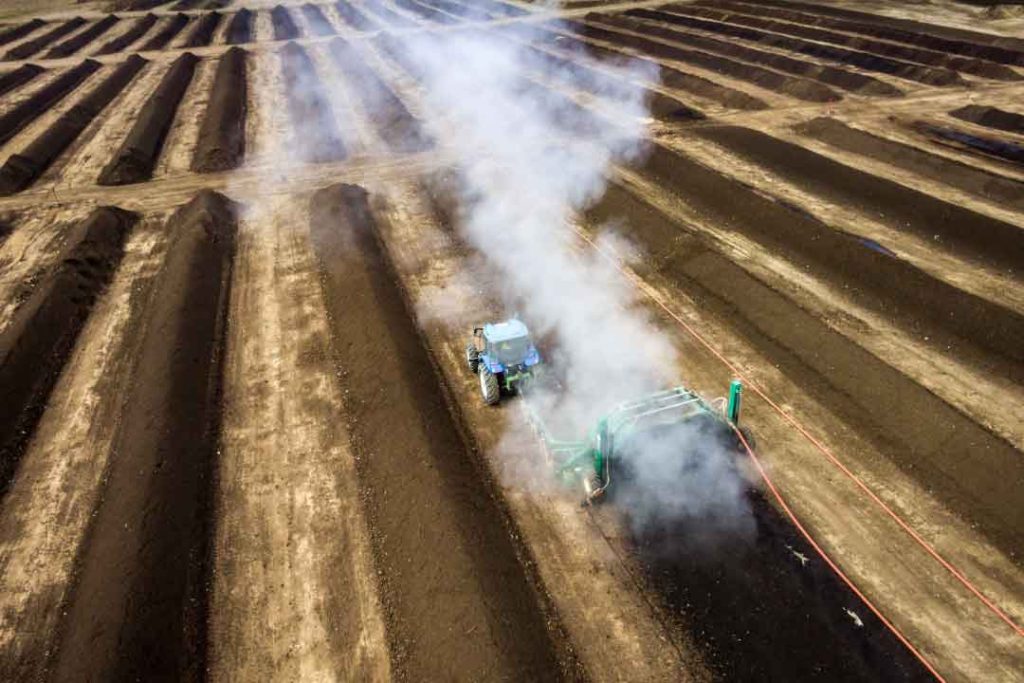
Aggregate Formation
Organic matter also helps with aggregate formation, which is the process of sand, silt and clay coming together to form larger-sized granules. Larger granules create nice, crumbly soil. Good soil structure allows water to easily penetrate the surface. Crumbly soil also creates better aeration, better water infiltration, and a better ability to retain water.
Well-aggregated soil improves root growth. It also provides a healthy habitat for soil organisms. In turn, the organisms create a favorable environment for plant growth.
Hummus
Although low in nitrogen, hummus is the most mature soil component. In most soils, hummus makes up 70-80 percent of the organic matter. Increasing soil hummus improves both soil and crop growth. Adding hummus to the soil has long lasting effects. Not only does it feed the soil for the season, or even for the following season—it breaks down slowly and will continue to feed the soil for decades. Sometimes hummus can last for hundreds of years. Straw and cornstalks are high in carbon and low in nitrogen. Both decompose slowly and are efficient suppliers of hummus.
Cover Crops
Cover crops—or green manure—build nutrient-rich organic matter in the soil. The plants collect the sun’s rays, which powers photosynthesis. The plants take in carbon dioxide from the air to produce food for the plant, and food for the microorganisms living in the root zone. Clean oxygen is released into the atmosphere during this same process.
Cover crops such as young legumes and cereals are high in nitrogen. They decompose quickly and produce less hummus than chopped straw or cornstalks.
A cover crop works to keep nutrients in place. So, in fields with high fertility levels, a cover crop could save farmers money in fertilizer costs. If farmers have a lot of phosphorous in their fields, cover crops are a good way to go—by adding nitrogen, Nick said, without adding more phosphorous.
Nick suggests sending a cover crop sample into a testing lab before incorporating it into the soil. The lab can analyze for dry matter and nitrogen content. Such a test can predict how much nitrogen will be released in that growing season.
OSU offers a free online organic fertilizer and cover crop fertilizer calculator, with a mineralization model. “It’s not the be all and end all, but it’s useable and grower friendly,” Nick said. This calculator is intended for growing conditions in Western Oregon and Western Washington.
Nick points out that farmers in different regions with different soil types and precipitation levels will need to check with their local extension agents, or land-grant university.
Annual soil tests are the best way to determine crop needs and monitor soil pH levels.

